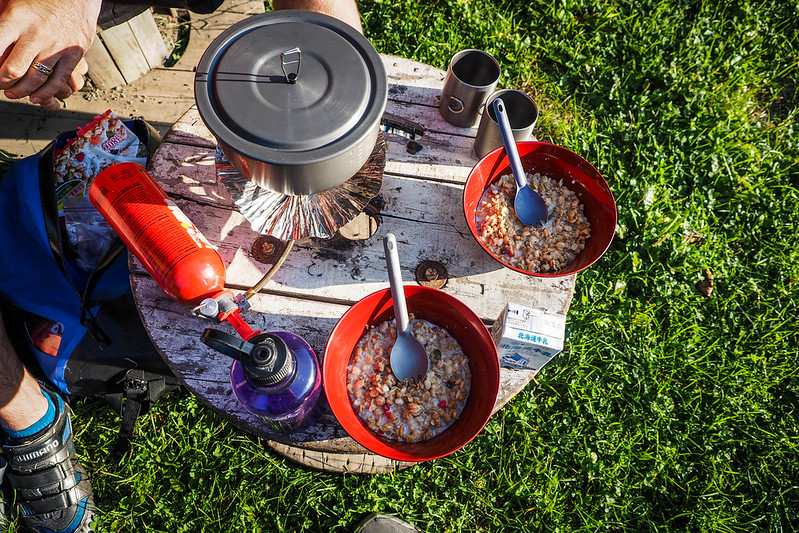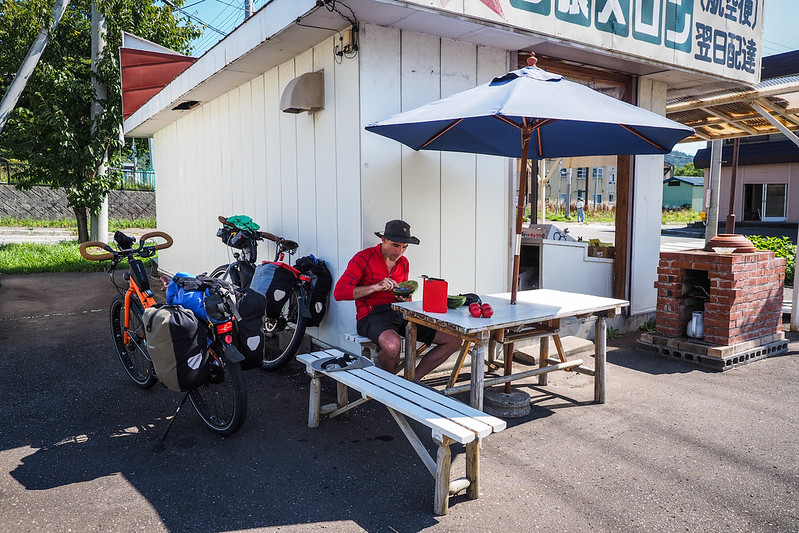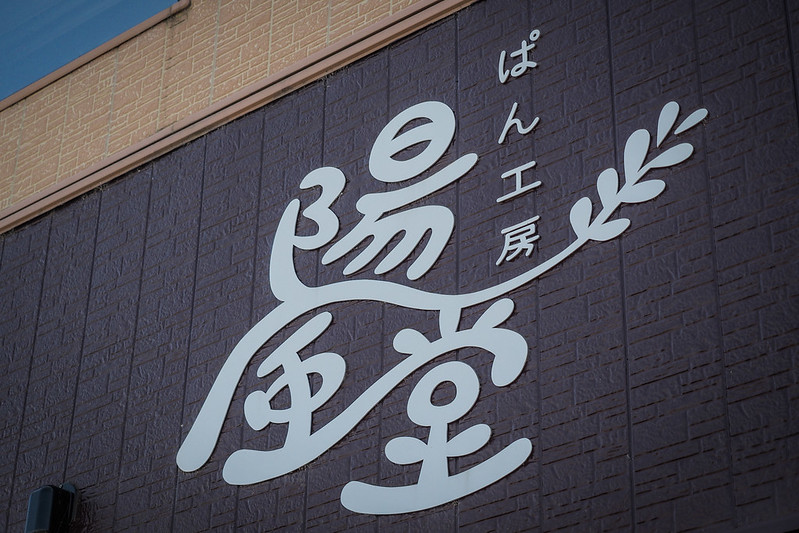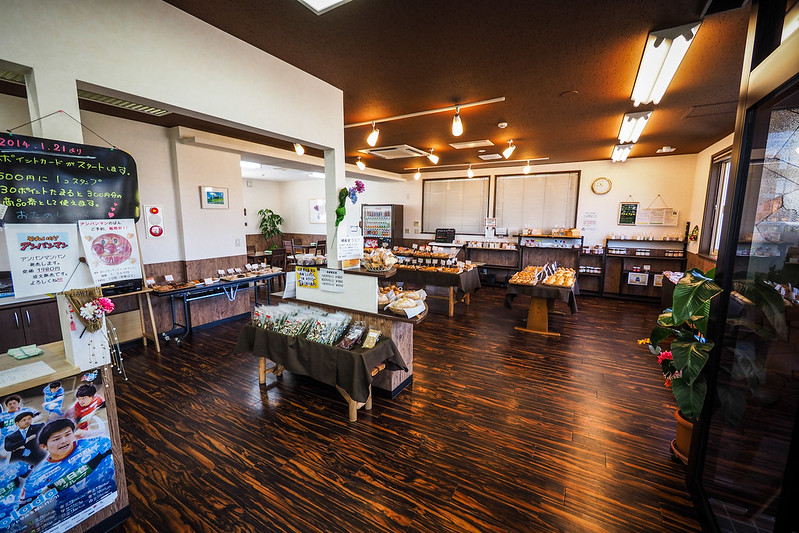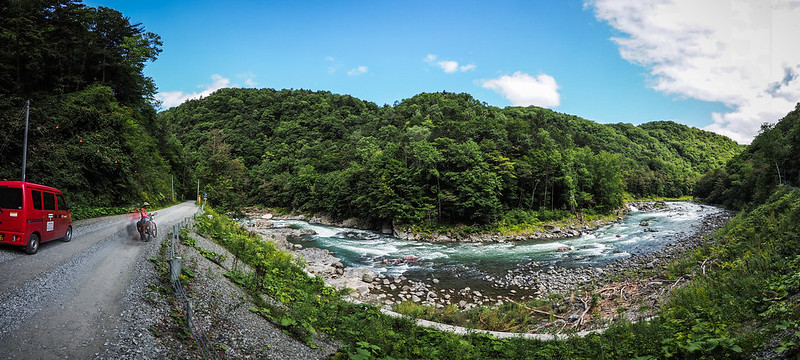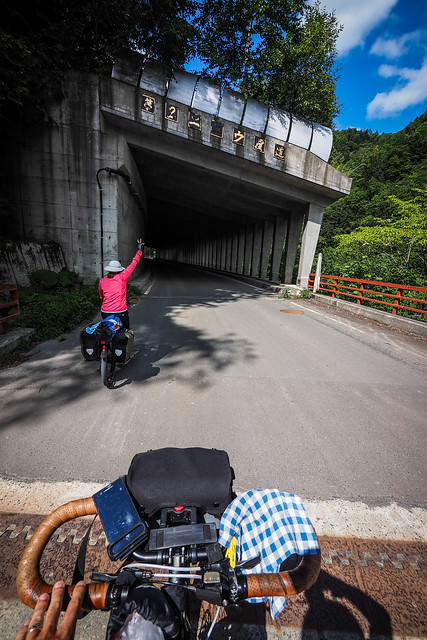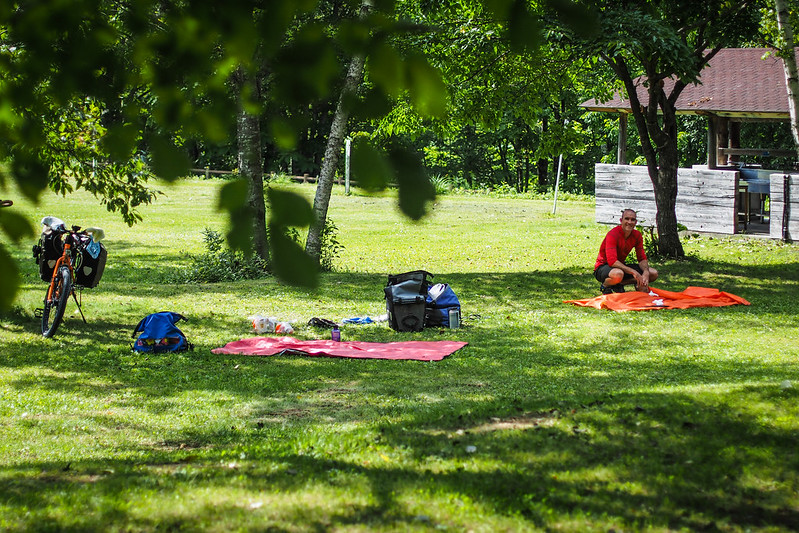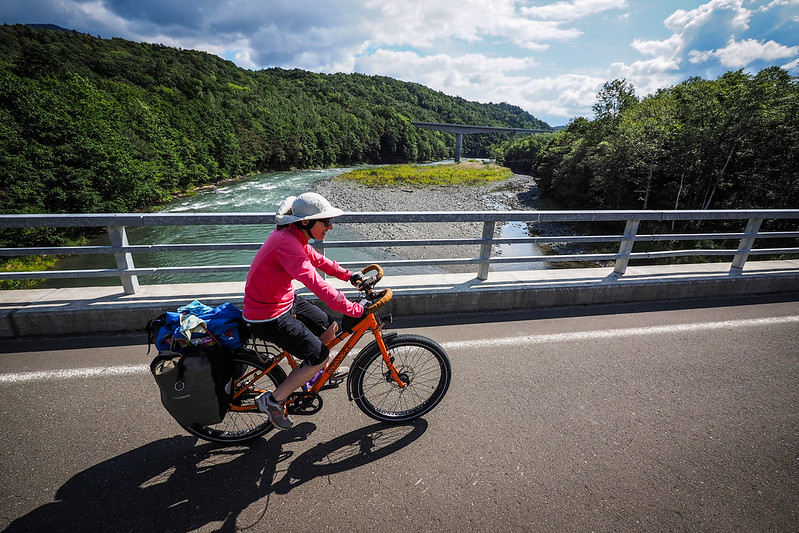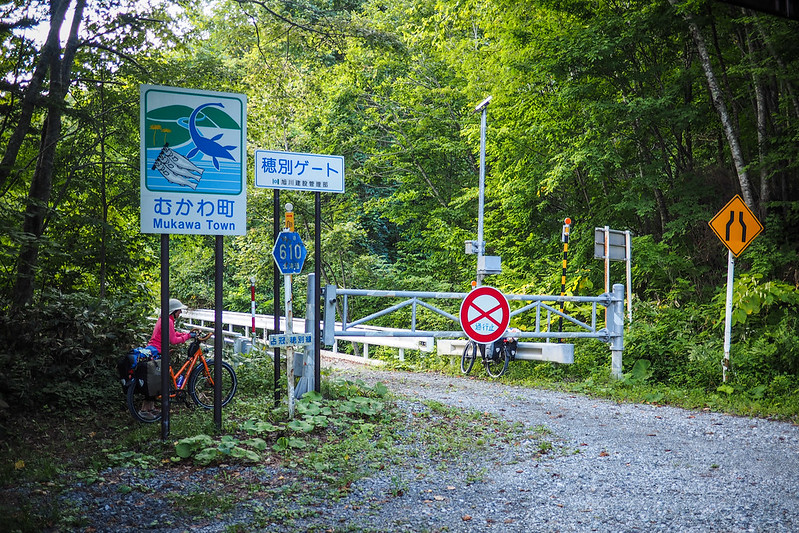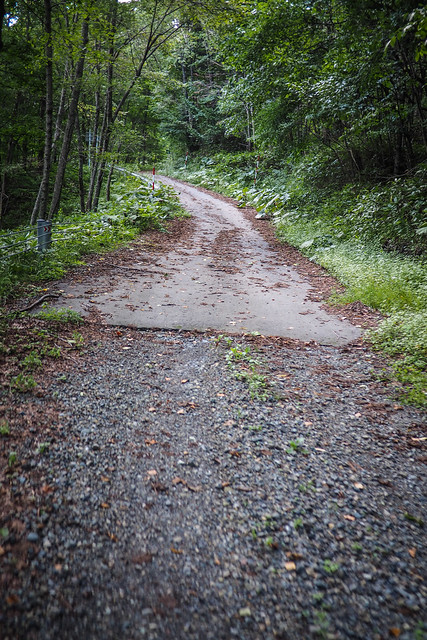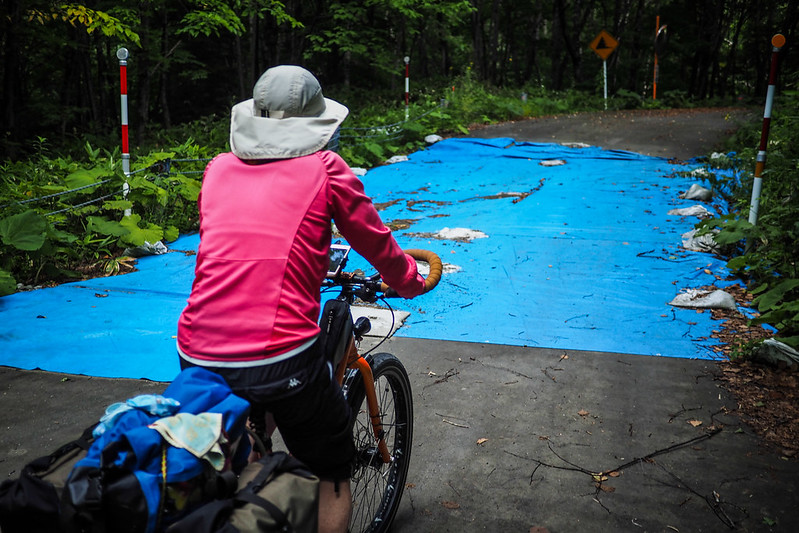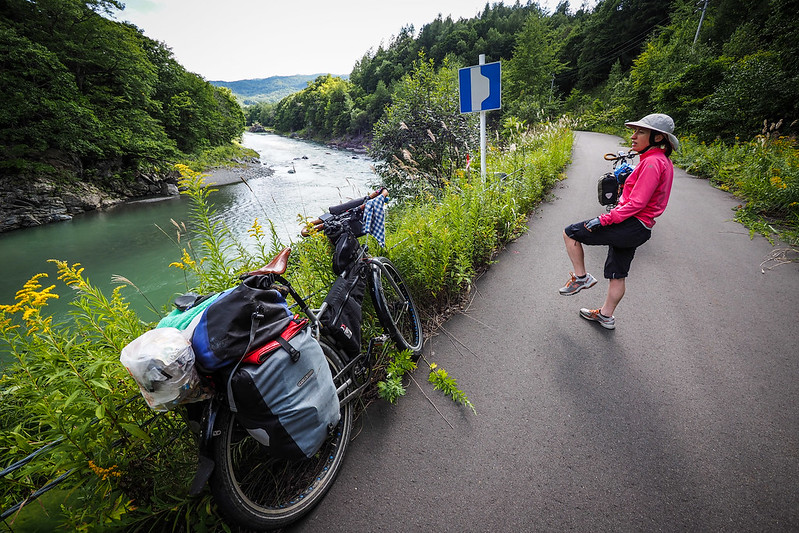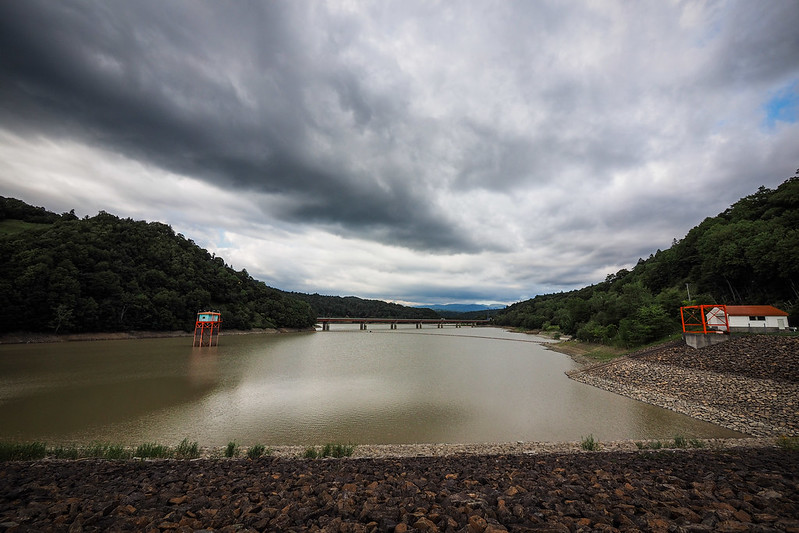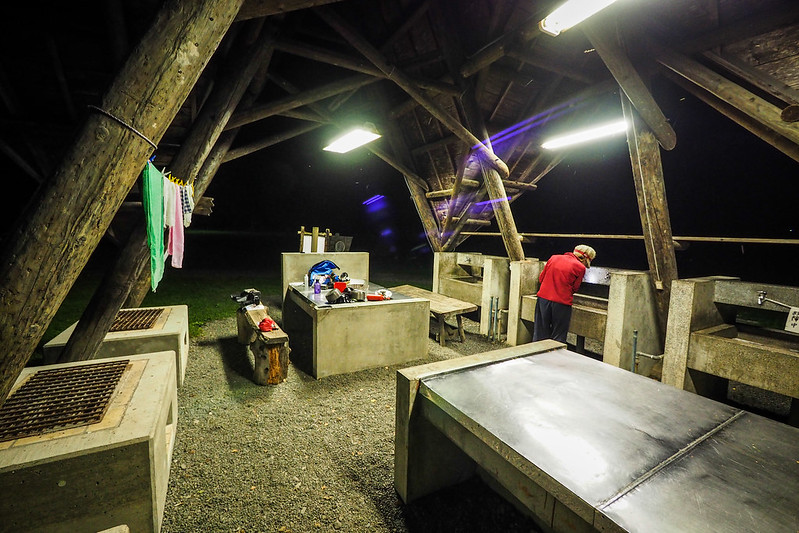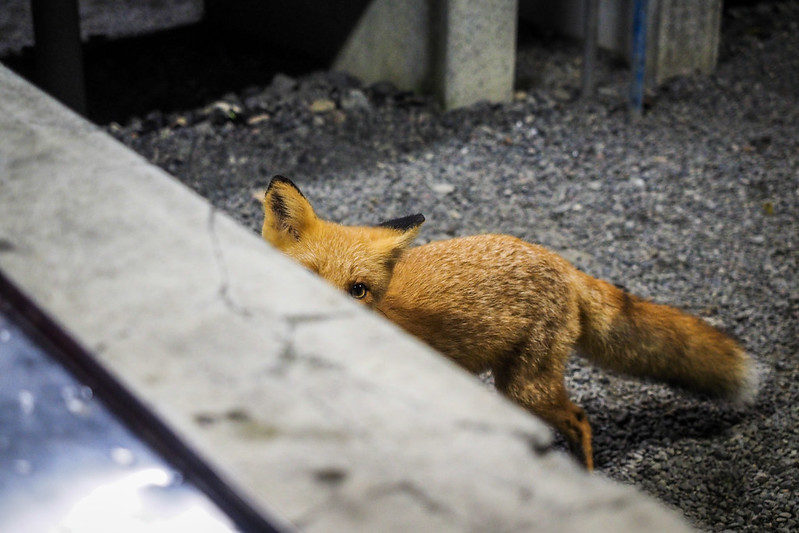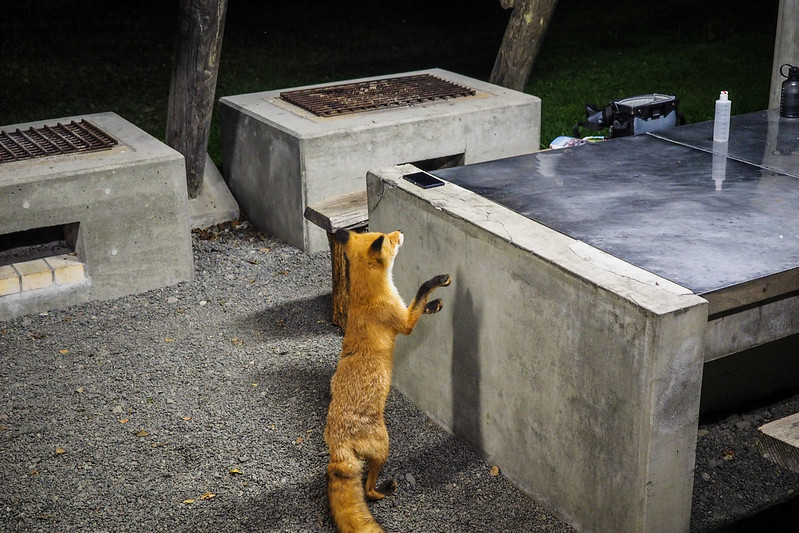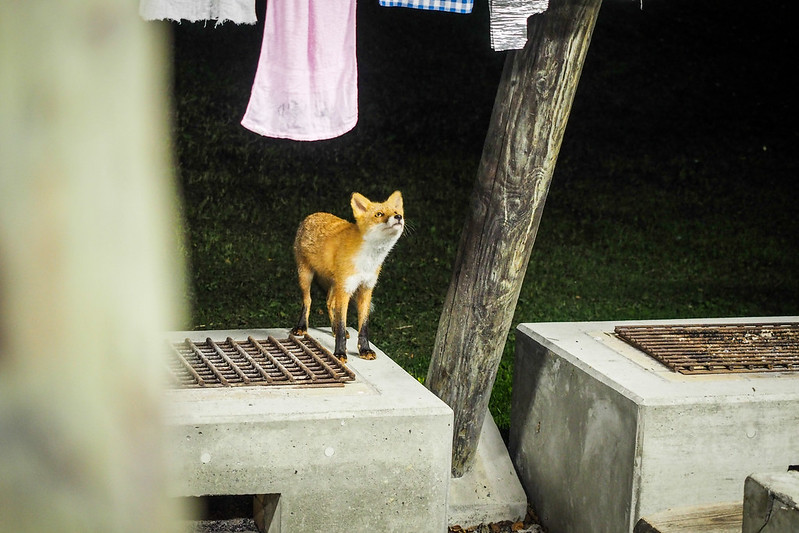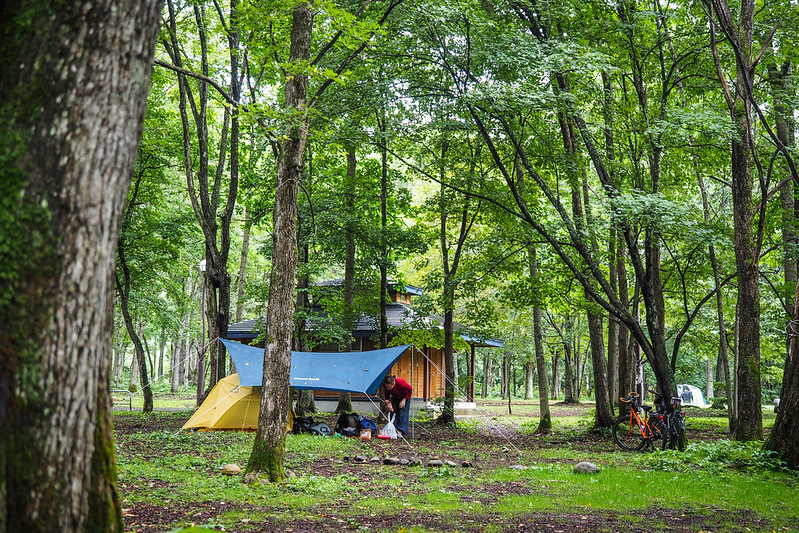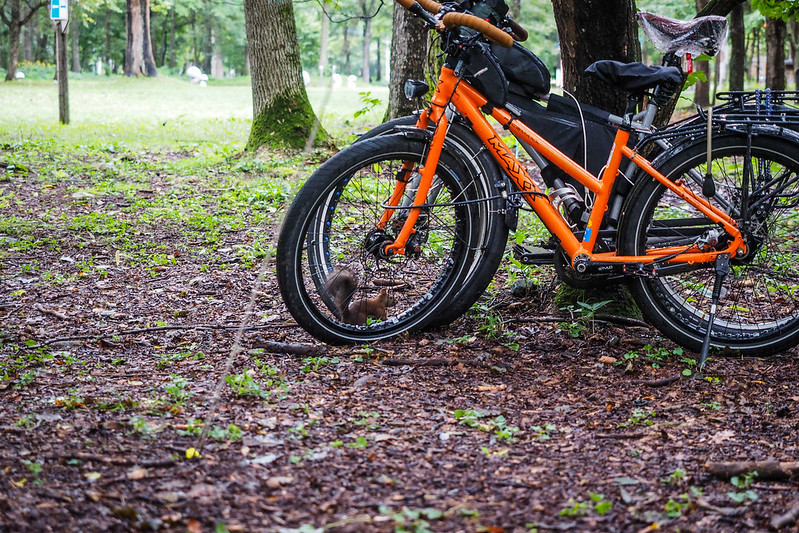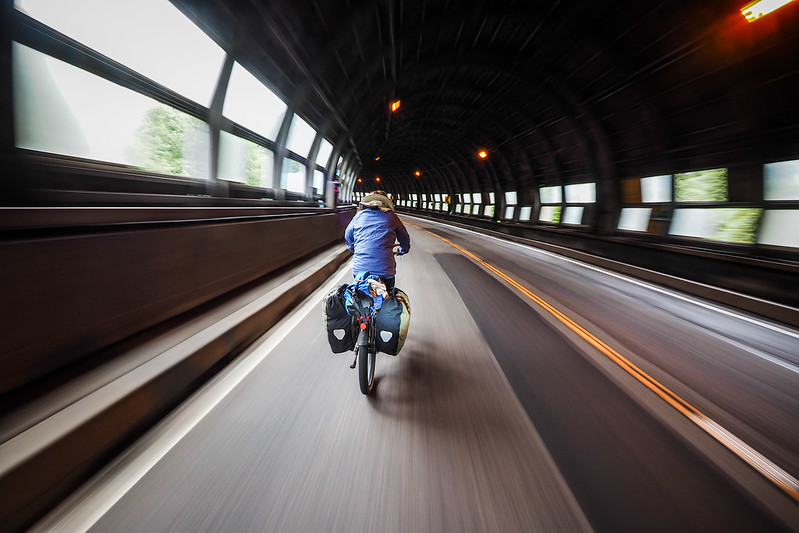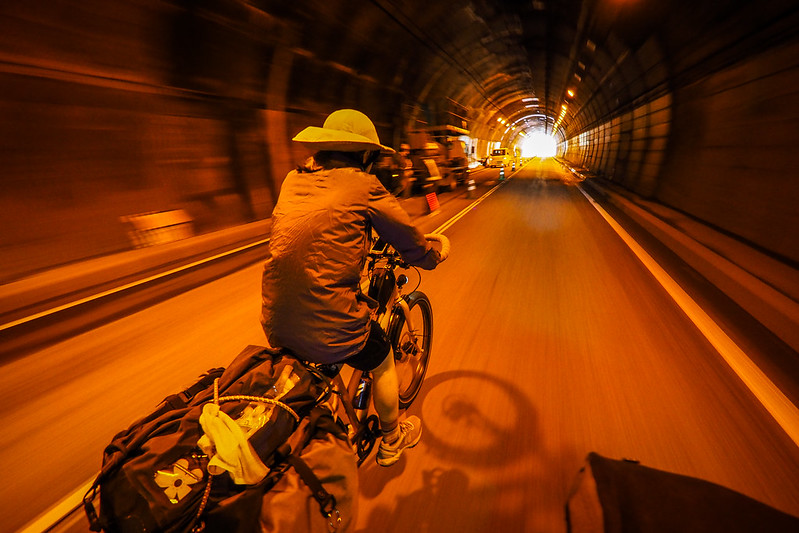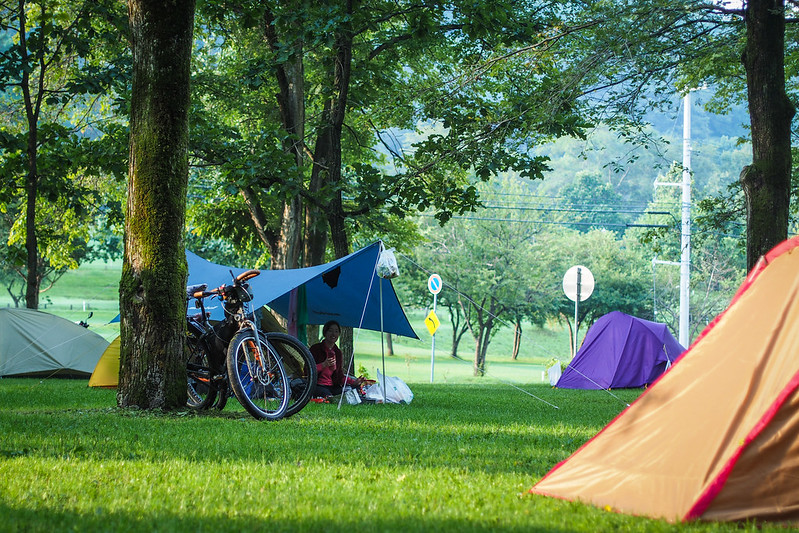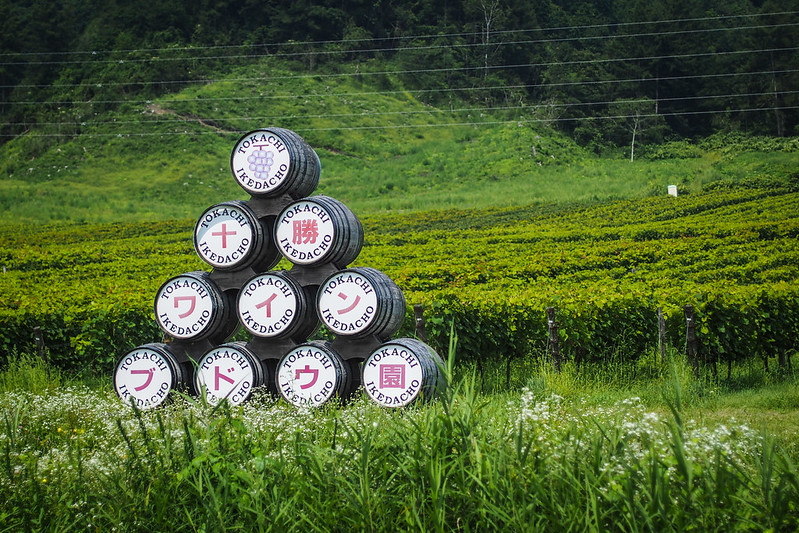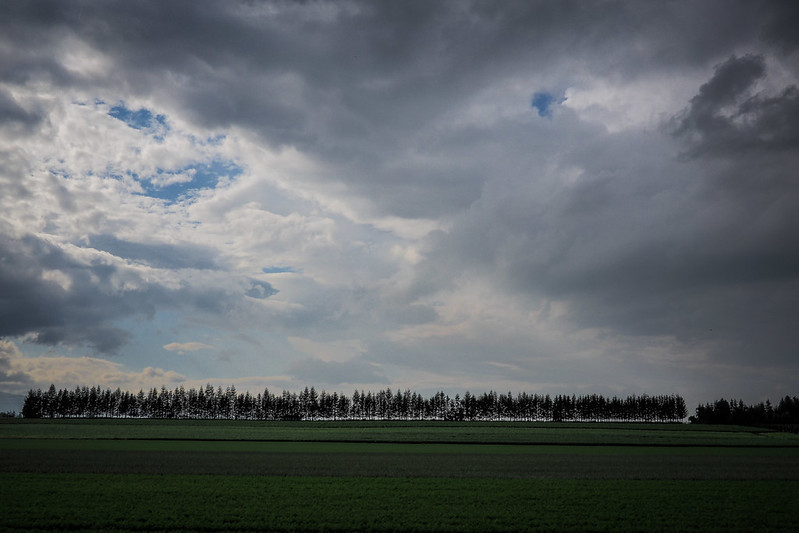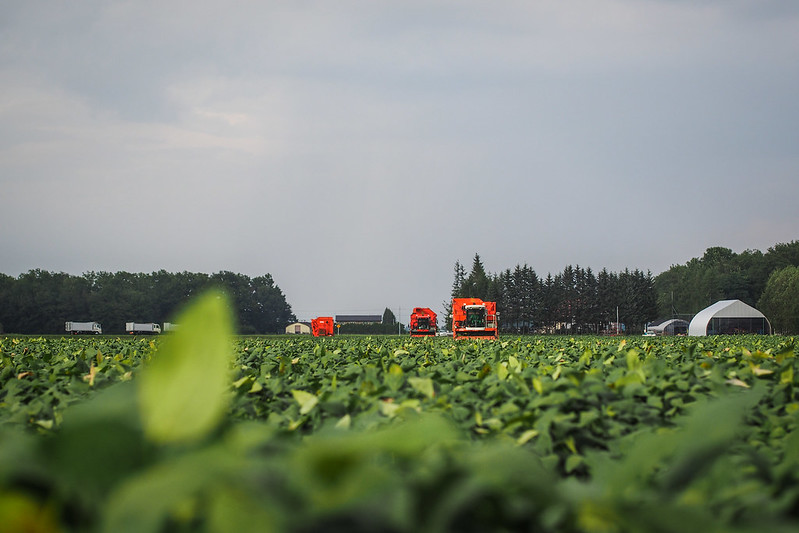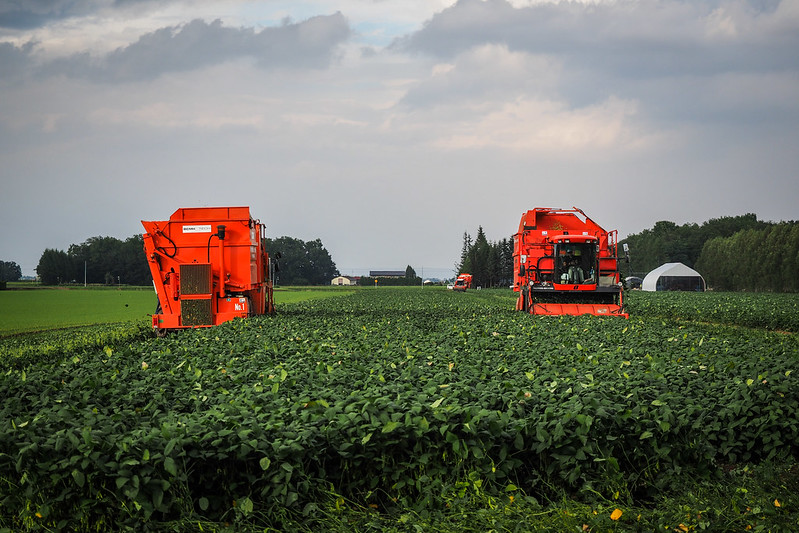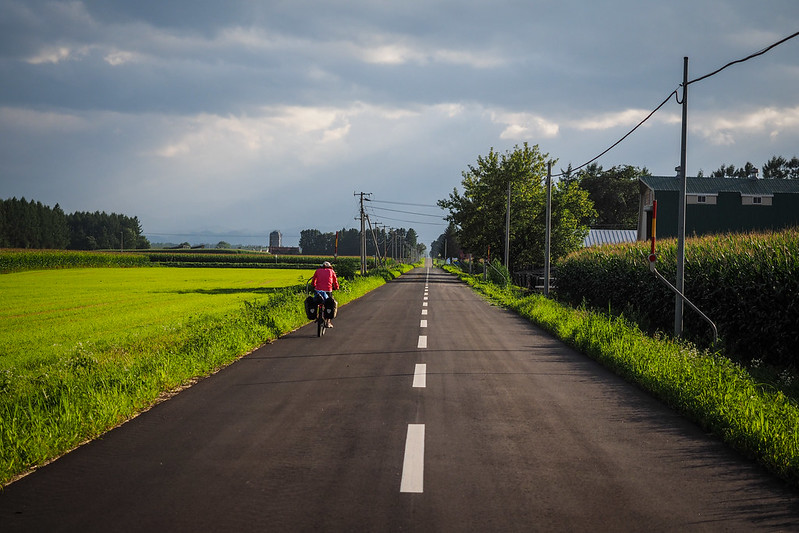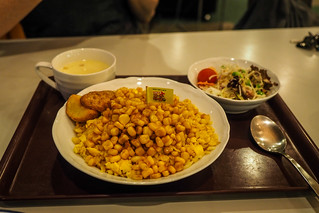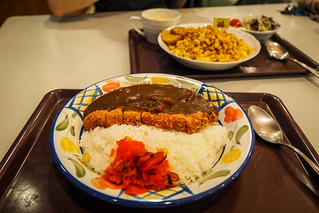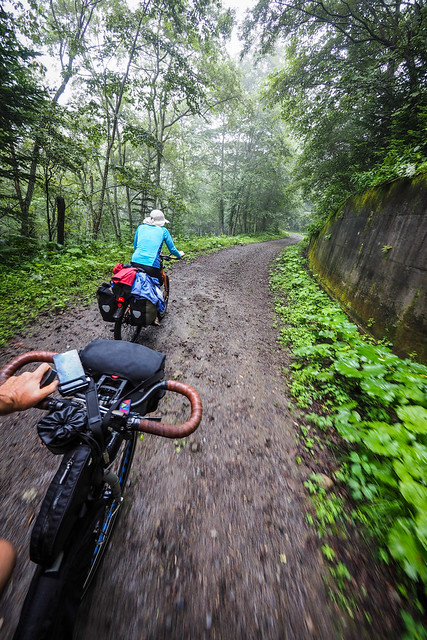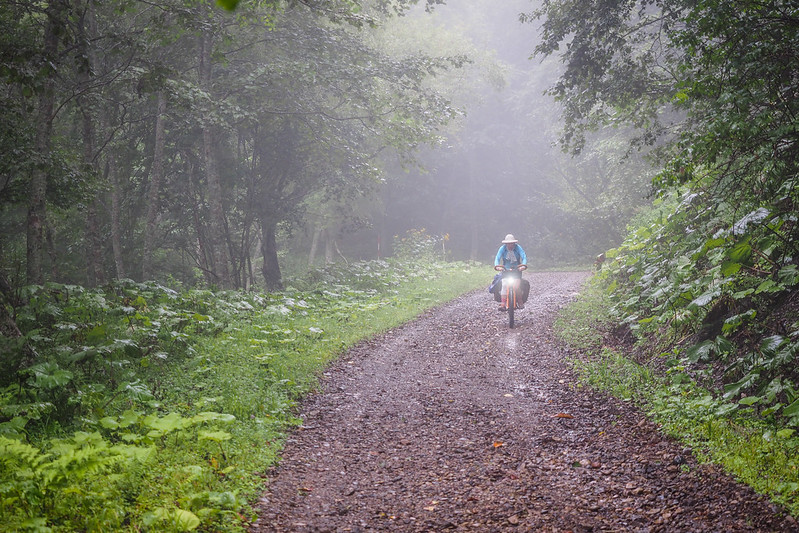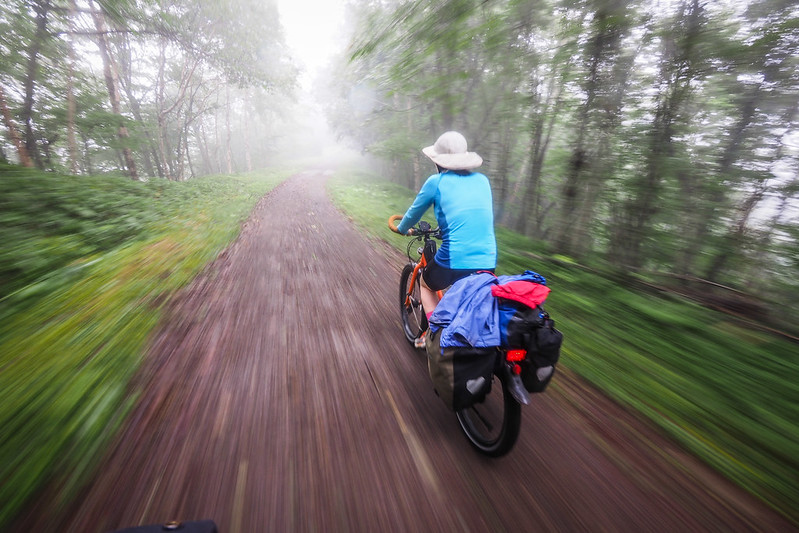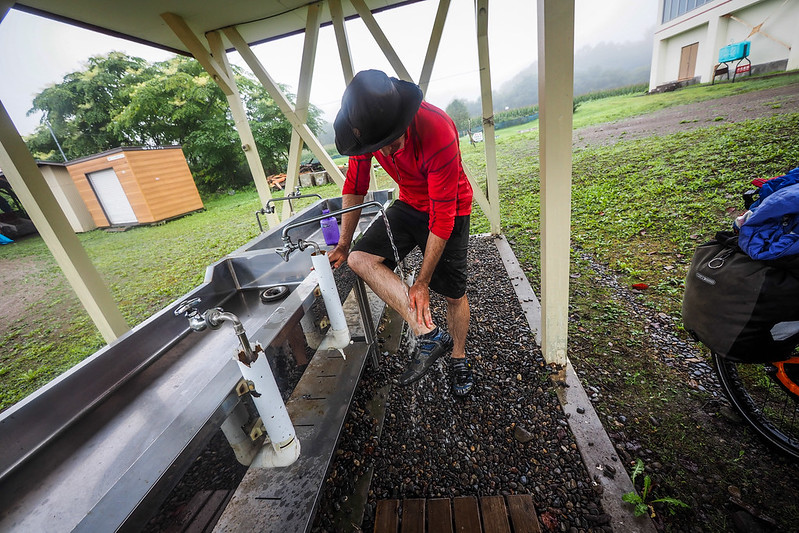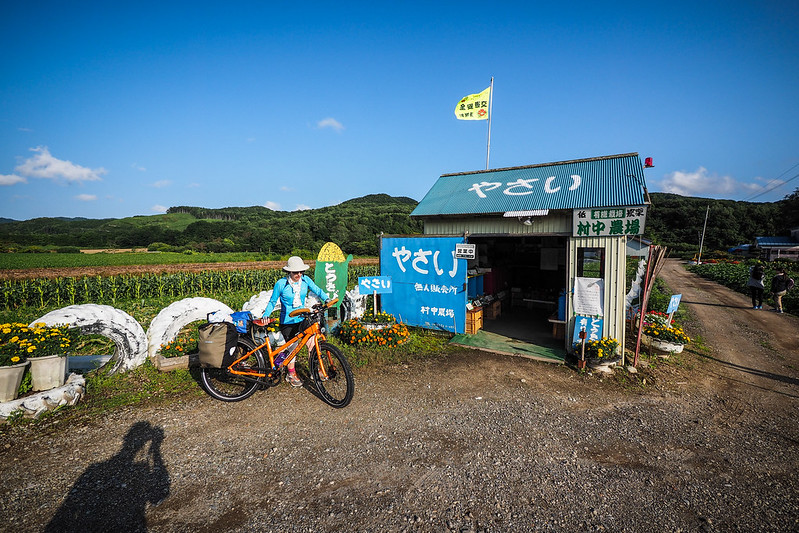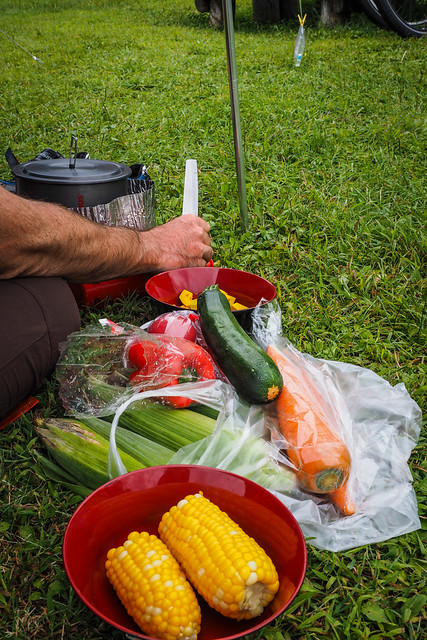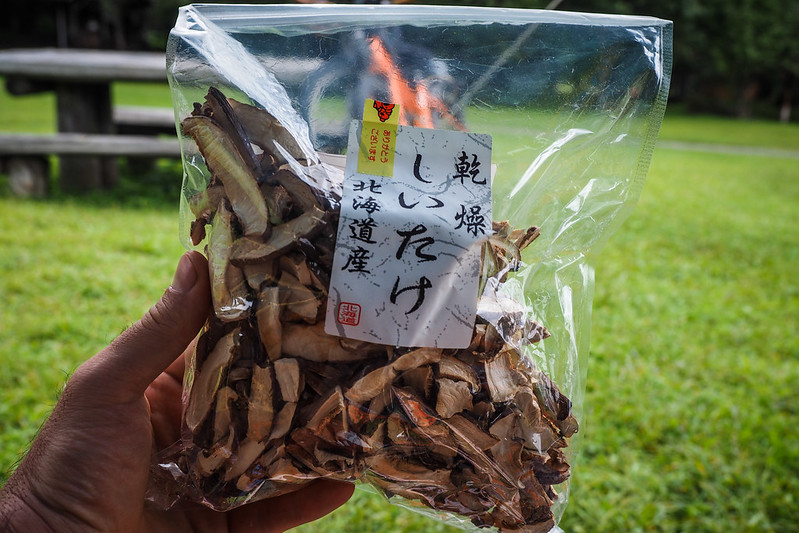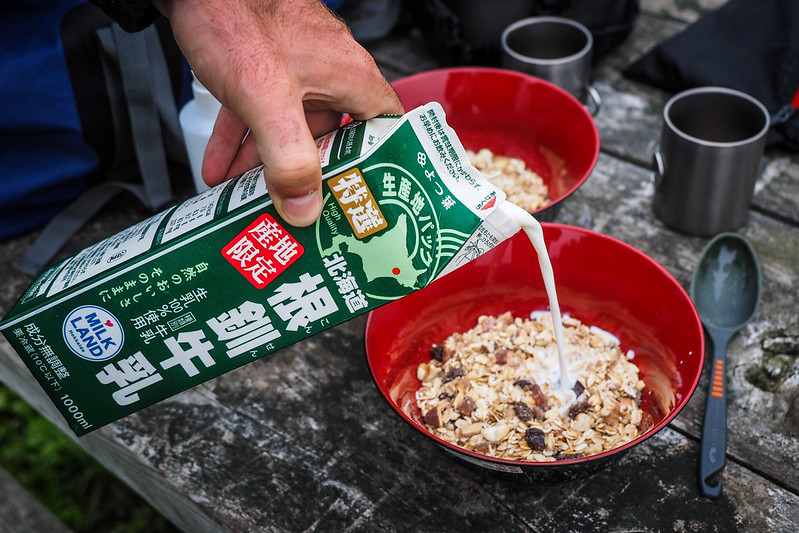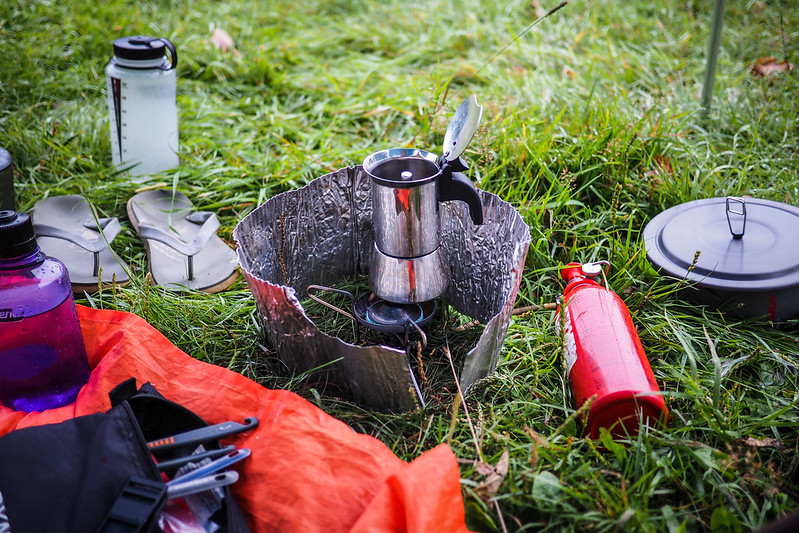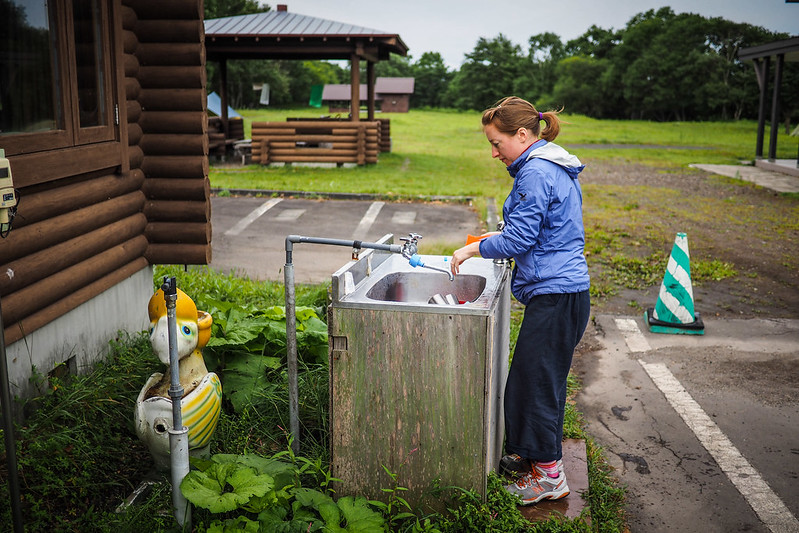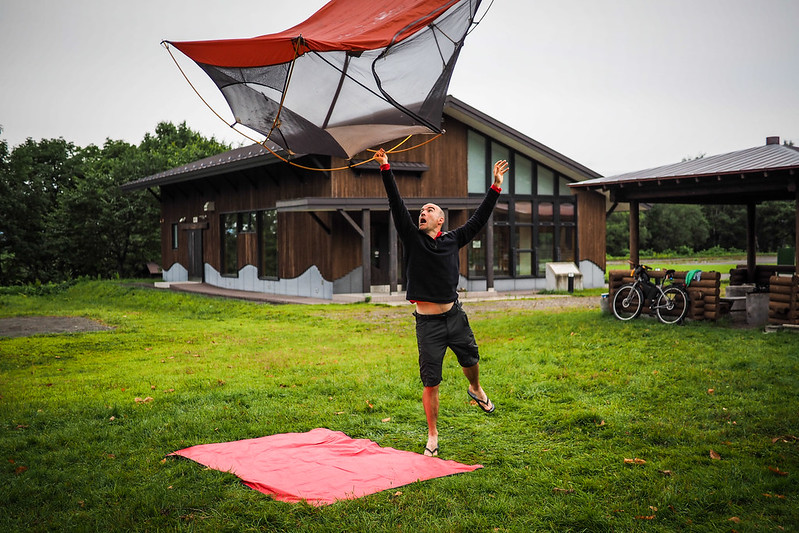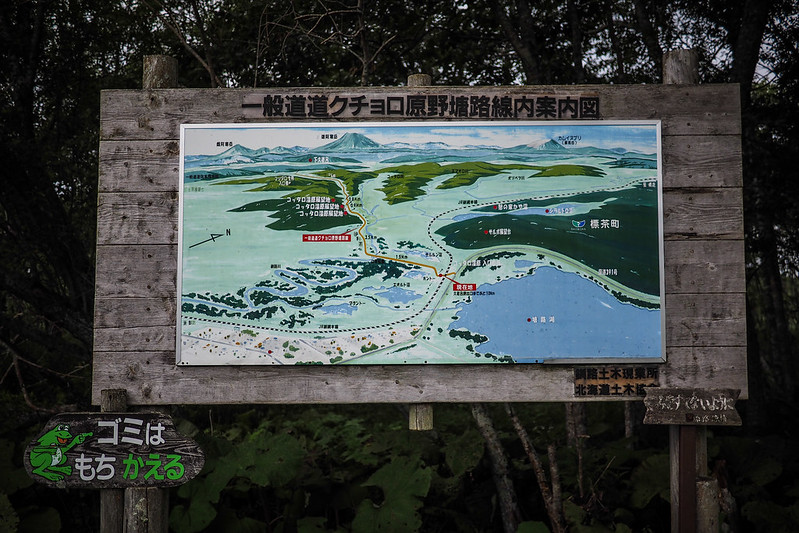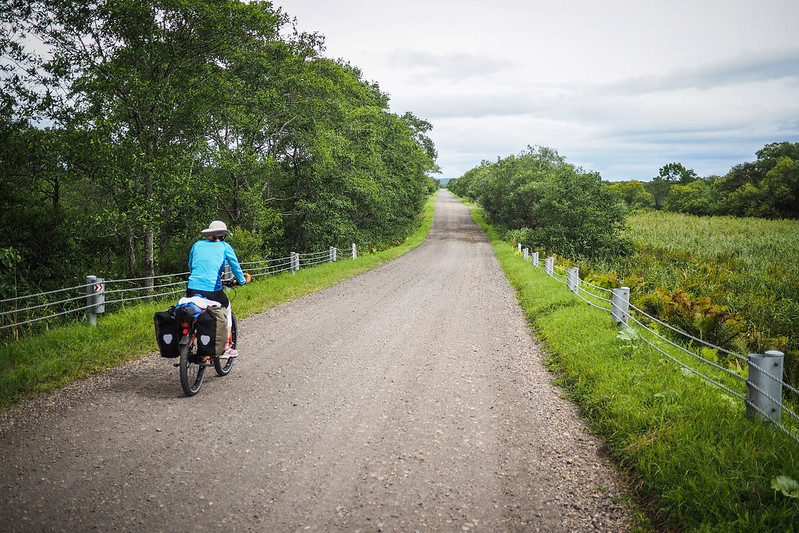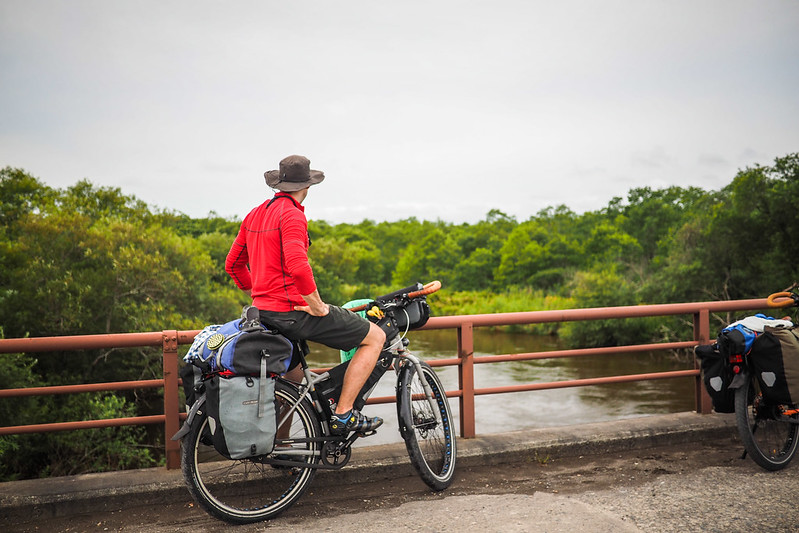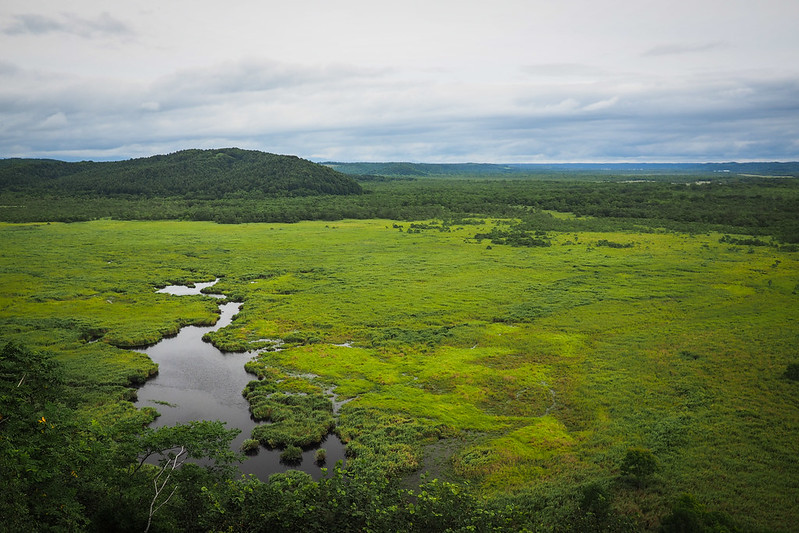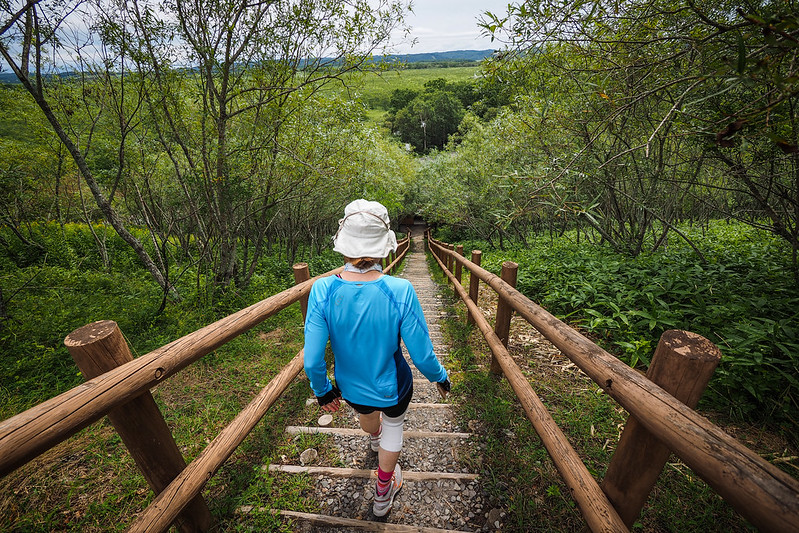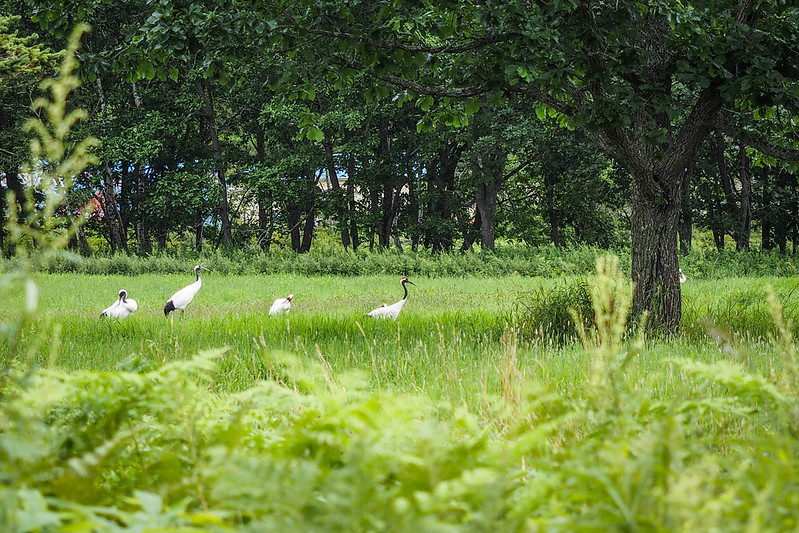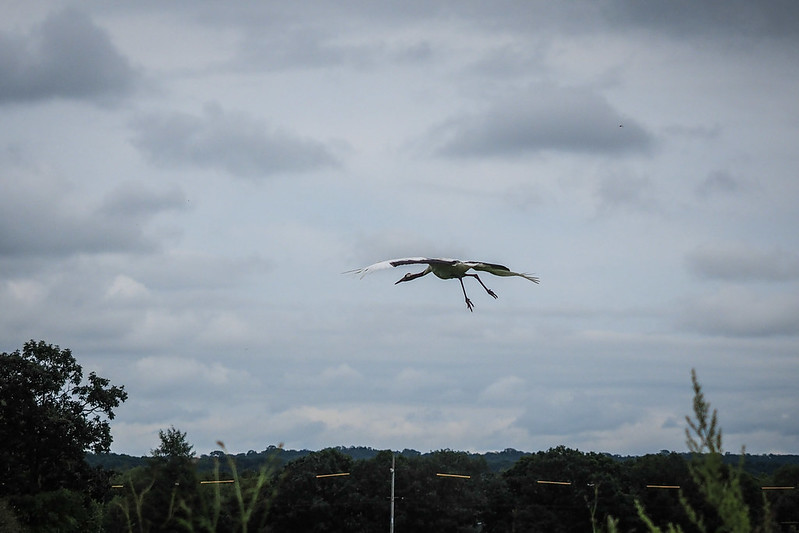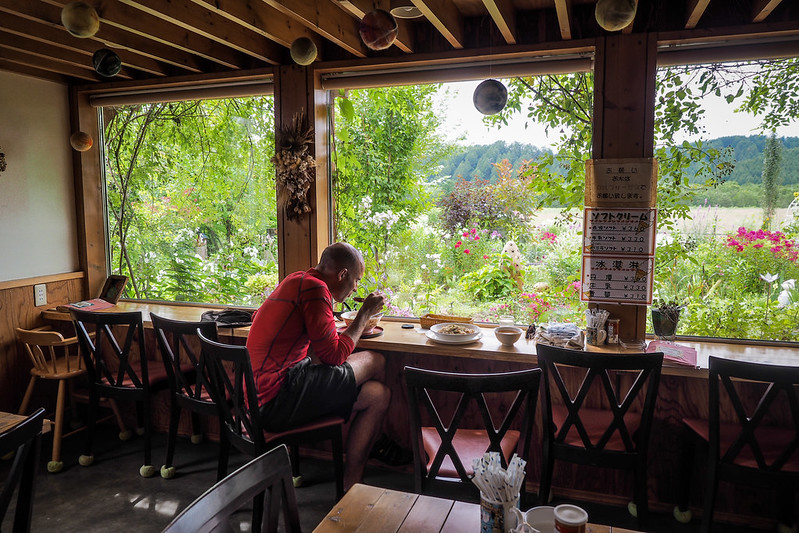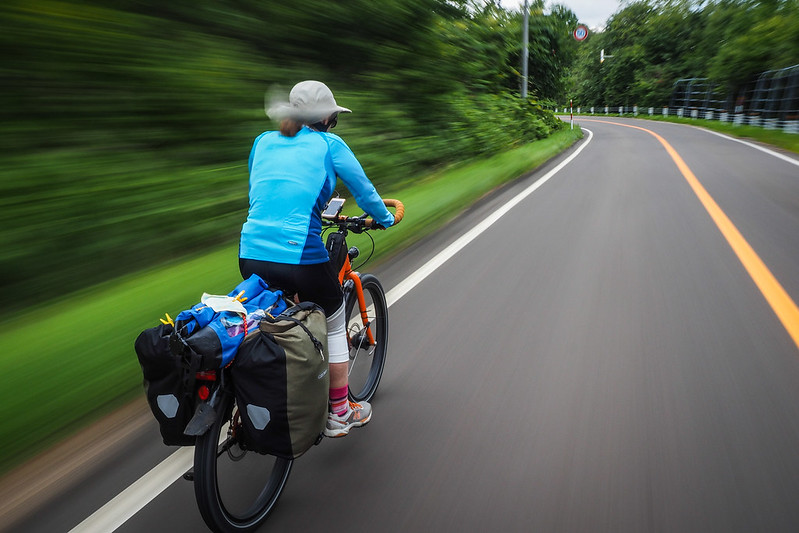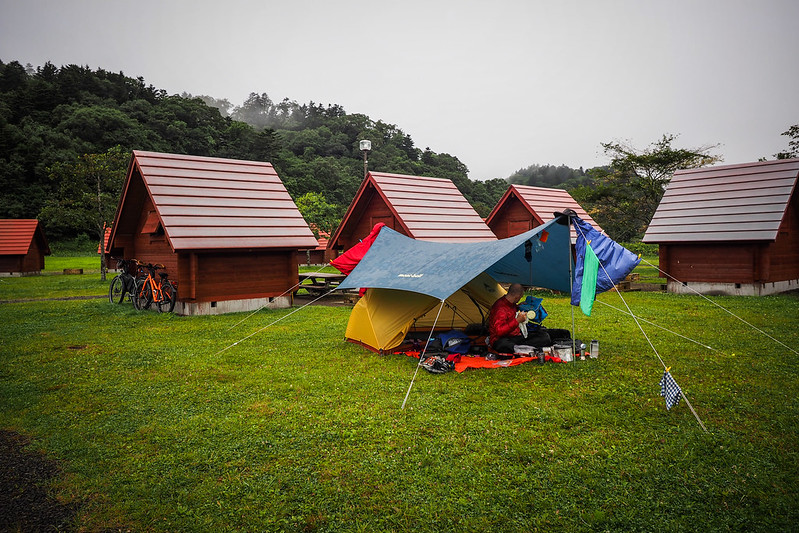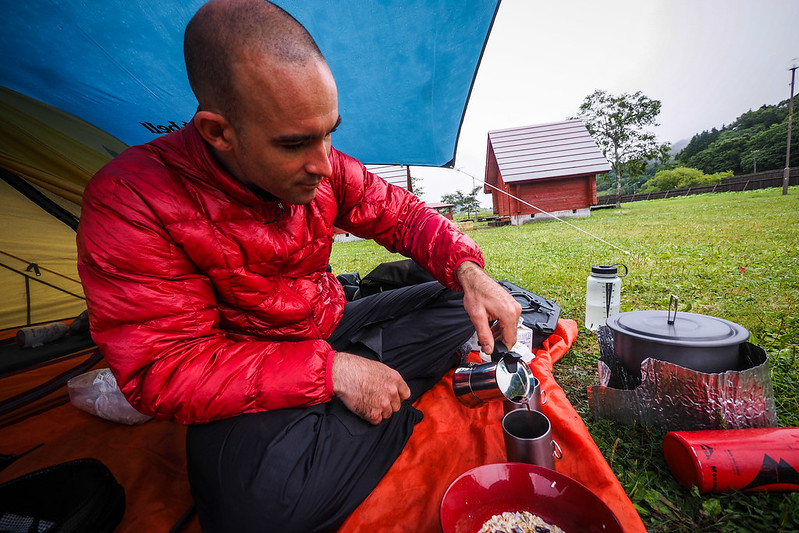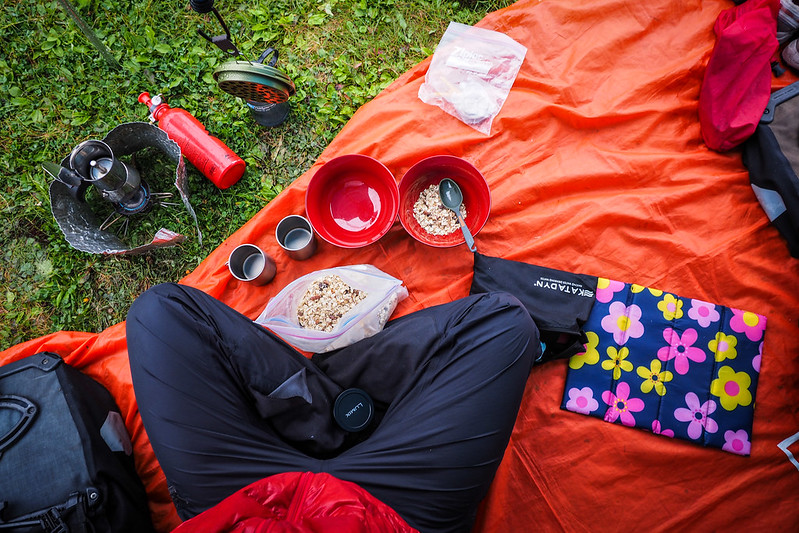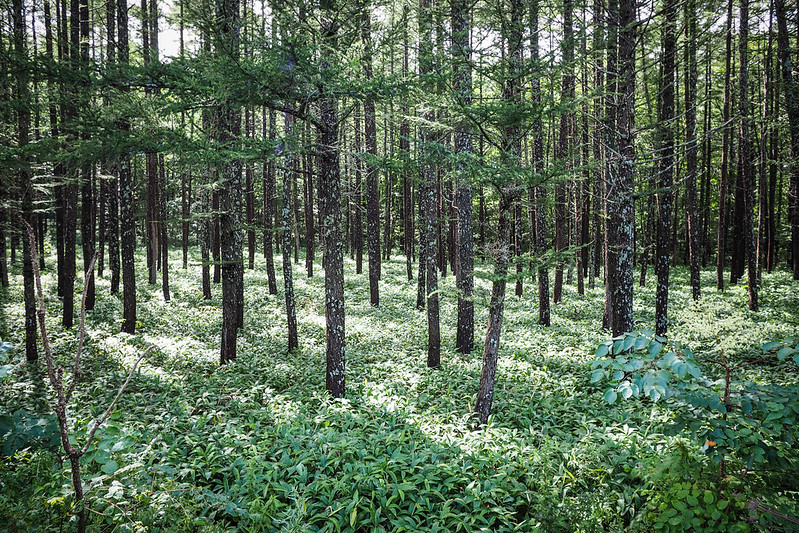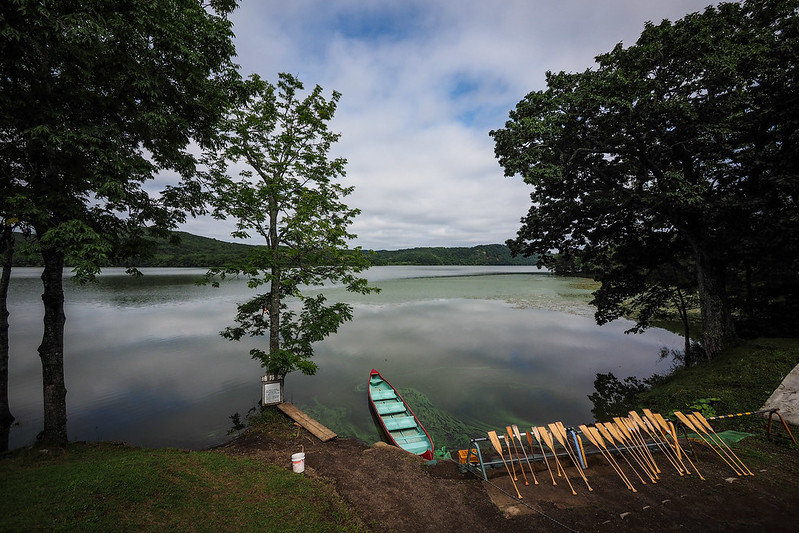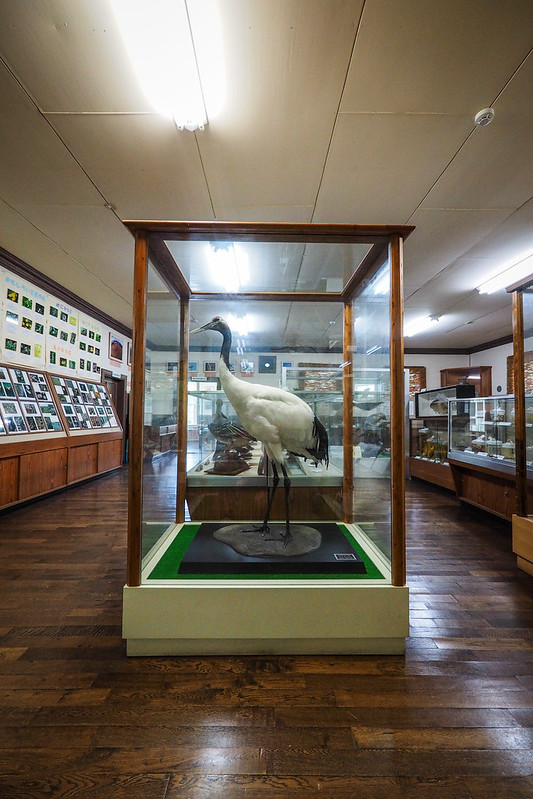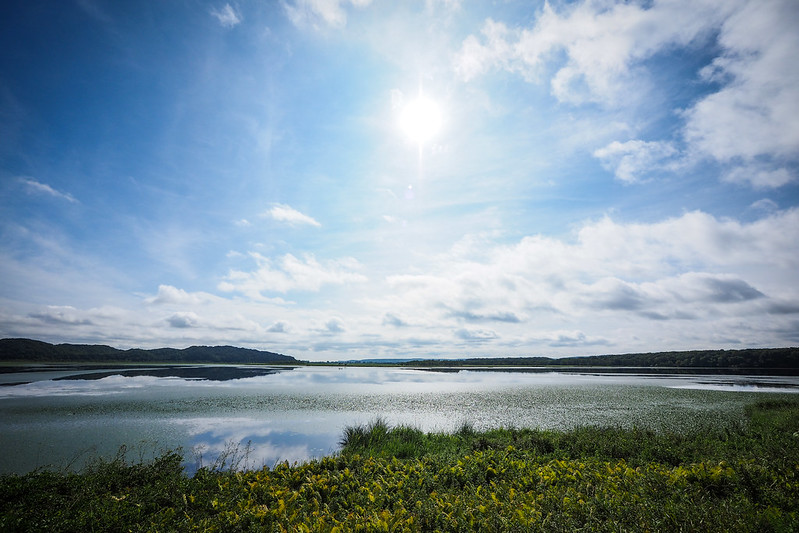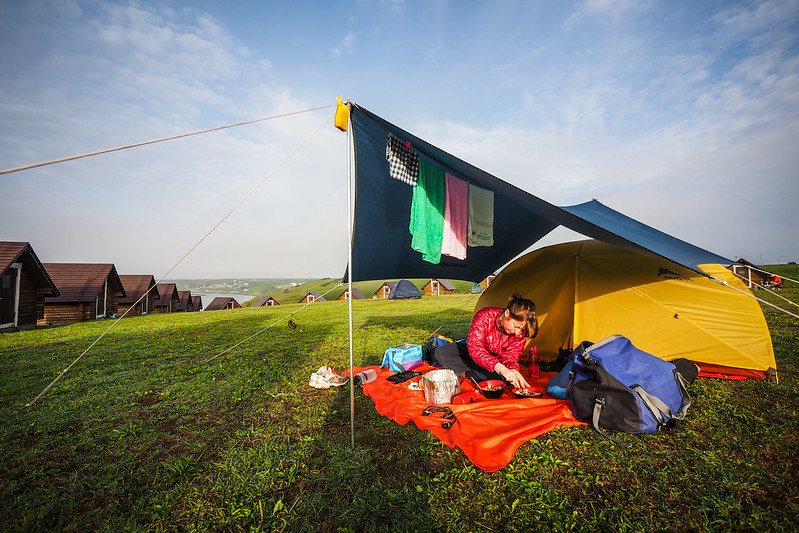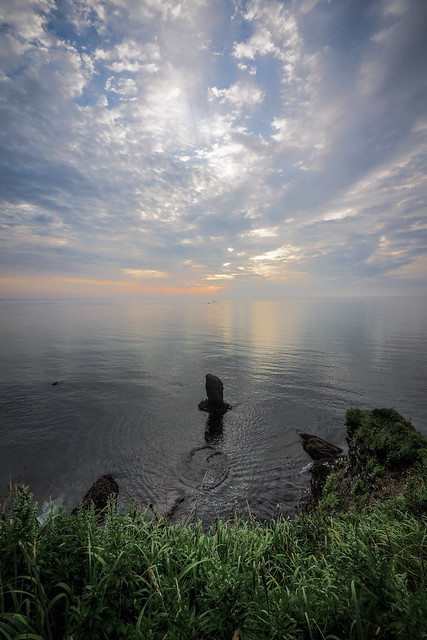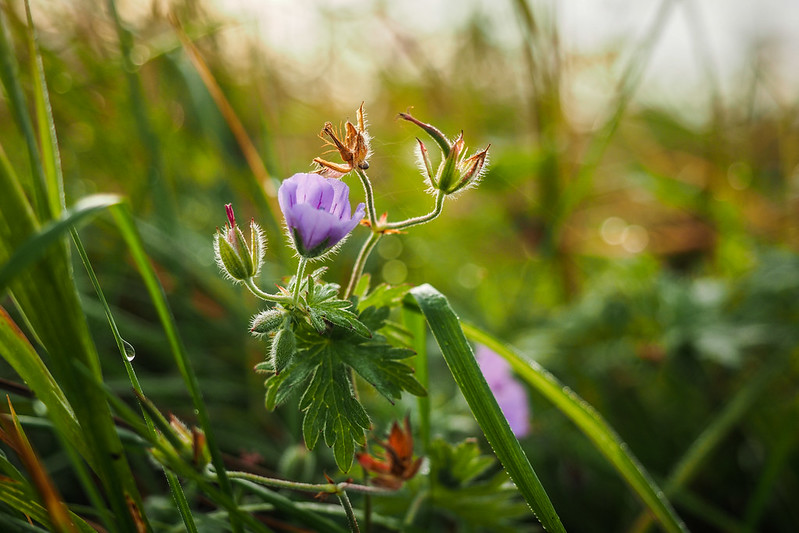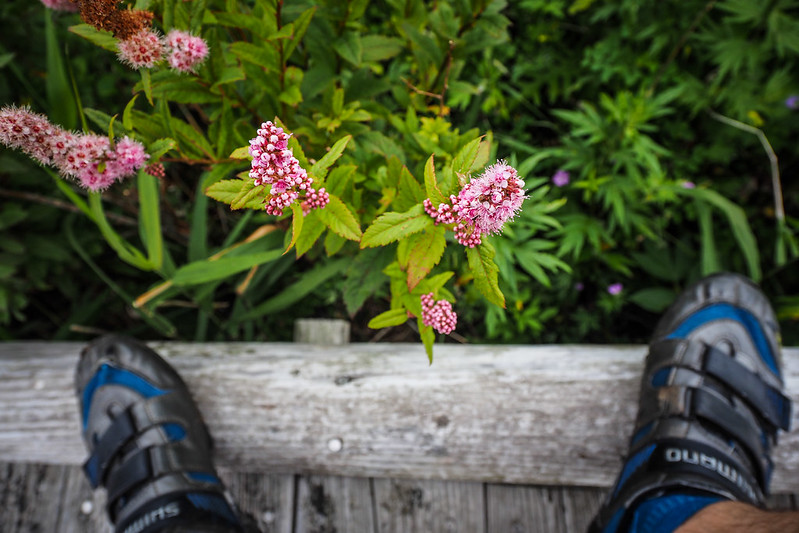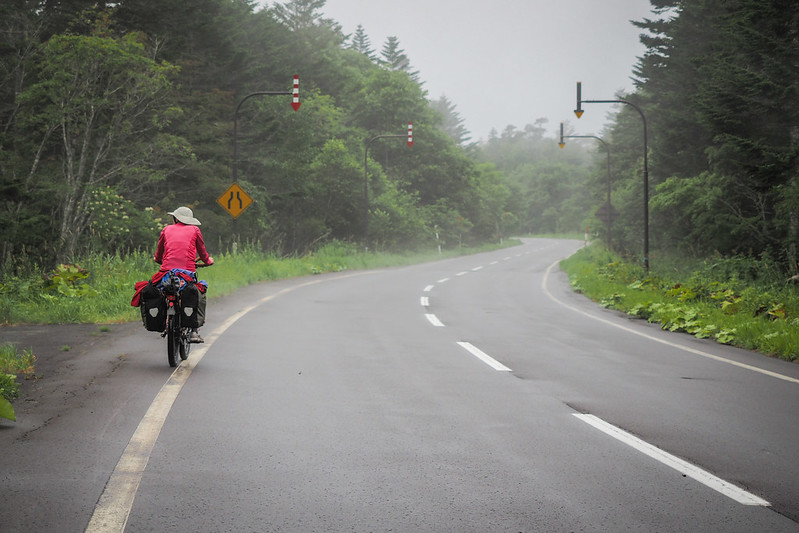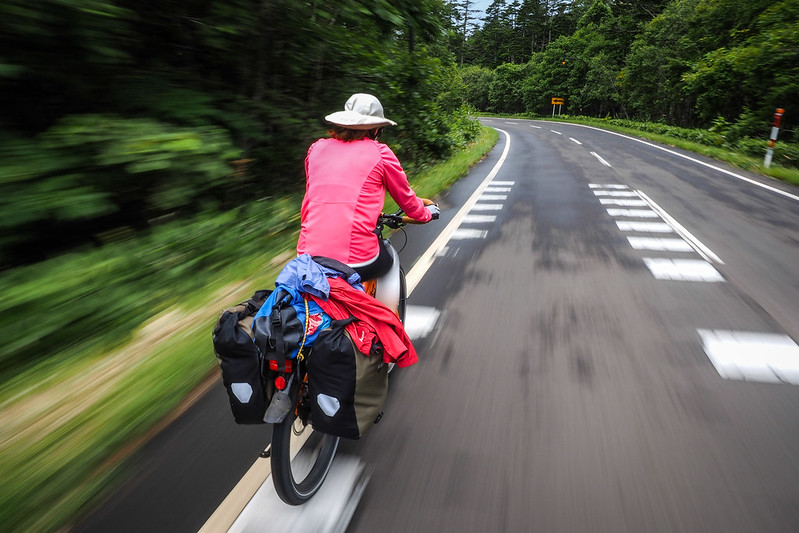Our approximate route for the two days: https://goo.gl/maps/suFP8
Inevitably on the last few days of our annual cycle trips here in Hokkaido, I stop taking photos. Things get familiar, and I am less inclined to take out the camera. But that’s not to say that our route on these last two days was not any fun. The rural surrounding areas of Sapporo are a delight to travel by bicycle in. And especially at this time of the year: right on harvest time means plenty of very cheap local produce to be had (and hauled back home on a groaning bicycle).
We got away from Hobetsu campground fairly early after a solid breakfast.
And it must be the season for dragonflies, because they were everywhere…seeking the highest spot to bask in the morning sunlight…such as my head…
The day would turn out to be a scorcher. By the time we got to Yubari – the town famous for going bankrupt…and for producing very delicious melons – it was almost 30 degrees Celsius. A 300 yen watermelon was the perfect treat for parched bodies.
The day was mostly downhill or flat. Until we decided to try to find the free-range egg farm whose eggs we often buy in Sapporo. Whenever we buy the eggs from the sellers at markets in Sapporo, they encourage us to come for a visit. So we went for a visit.
Yuni Farm was the place we were aiming at, and it was up a rather steep hill. Or at least it seemed steep to two hungry, sun-beaten, tired cyclists. The promise of fresh bread from their bakery kept our spirits up.
Until we got there and the place was shut.
Plan B was quickly put into action. It was already 12:30pm, and we just wanted something to eat, but we decided to hightail it to the Yuni Hotspring Onsen Spa Resort, 5km away. We had been there once before, and were impressed by their great restaurant and baths. From the onsen it was only a 2km ride to Yuni Campground.
Up hill and down dale, we made it to the onsen just before 2pm. We were well ready for some lunch.
Lunch and a hot spring soak later, we cycled to the campground, another spot we’d stayed before.
The name of the game the next day was just to get to Sapporo, via the Kita-Hiroshima/Shiroishi Cycleway. Highlights along the way included discovering an awesome bakery in Naganuma Town (with free coffee)…
And an inspiring group of people mosaic-ing the walls of one of the underpasses on the cycleway.
We were back home in our apartment in Sapporo by 4pm. And thus brought to a close the cycle across Hokkaido summer trip of 2014.







